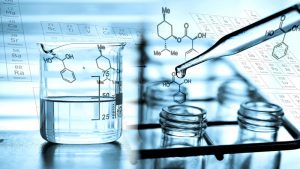APR's Technical Solutions Group (TSG) prides ourselves in not just quoting equipment and providing solution based consumables, but making it a point to thoroughly understand a customer’s needs and goals. As water wash plate technologies continue to evolve into a viable competitor to solvent and thermal processing through improved print quality and longevity; chemists developing polymer and solvent chemistry are not sitting back and resting on their past success. Optimal plate and print quality has never been the problem with a solvent system. Where solvent has been challenged in the past has been speed, odor, and sustainability. That has now changed as solvent processing environment has continued to evolve in recent years, both in terms of chemistry and equipment. Here are some compelling examples of this;
- Environmentally friendly
- Quick plate throughput competitive with water and thermal
- Proven history and unsurpassed quality
- Widest variety of polymer materials available
Processors & Solvent Washout Solution
- Solvent wash systems have been in place the longest in the industry, provide unsurpassed plate quality, and an extremely user friendly platemaking process with lower upkeep and maintenance compared to water wash systems.
- New processor technologies have increased not only throughput and consistency for platemakers, the newest systems have significantly improved in the area of VOC containment as well. Note: VOC’s are not limited to only solvent processing.
- Each state has "de minimis" rulings. De minimis is a legal term for an amount that is small enough to be ignored, i.e. too small to be taken seriously. Many commercial solvent wash systems are considered de minimis based on calculated and measured emissions.
- Example: [Ohio], if a unit emits less than 10 pounds per day of any criteria pollutant, the unit is considered “de minimis”. This is equivalent to nearly 15 million sq. inches per year of solvent processed polymer.

New Solvent Chemistry
- New solvent chemistry has provided lower odor, lower HAPs and lower VOC alternatives to the technologies of the past.
- Note: HPS has now released a brand new chemistry that TSG would classify as “NO ODOR”
- Some more recently developed washout chemistry has actually received the EPA’s Presidential Green Chemistry Award.
- New non-hazardous washout chemistries are available and viable options.
- Worker conditions and safety are greatly improved with these solutions due to high flash points, low vapor pressure, and minimal to no odor.
- New solutions NOT requiring heat during plate processing, reduces chemistry evaporation by up to 7%, further reducing VOC admittance.
- New chemistry can reduce plate swell by as much as 65%, resulting in a significant reduction in dry time (typical bottleneck). It is no longer uncommon for plates to be completely dry and return to their original thickness in as little as 25 minutes.
- Reduced dry times can mean throughput is “as fast” as other plate technologies including water and thermal.
- Some of these solvent chemistries with a solutions single component or even dual component chemistries (with common distillation temperature/rate) DO NOT go out of balance or require surrogate solutions post distillation when set to the manufacturers recommended/optimized distillation settings.
The solvent process environment provides flexibility in multiple areas, such as: the ability to interchange products with high confidence in plate quality; meaning multiple plate types, supplier types and plate thicknesses.
Multiple options exist for waste solvent handling: either internal distillation, or via external options.
- Modern solvent recovery systems (recyclers/distillation units) can recover in excess of 98% of this washout chemistry introduced to the system.
- These systems can be extremely and completely safe. Units certified explosion proof and are also certified to UL2208 for use in non hazardous location. Explosion proof electrical equipment (class 1, division 1, equipment). In short, some units are classified where they could be placed in an office environment.
- Redundant high temperature controls that shut down the equipment at a predetermined safe maximum limit. This applies both to the heat transfer oil and the solvent recycling.
When many think of environmental impact of solvent wash plates they are not considering that the actual washout solution and polymer waste can be non-hazardous. Historically this was not a technology viewed as the fastest method in which a plate can go through the entire process post CDI; now it can be just as fast as all alternative platemaking technologies and still offer some of the highest quality plate on the market.
